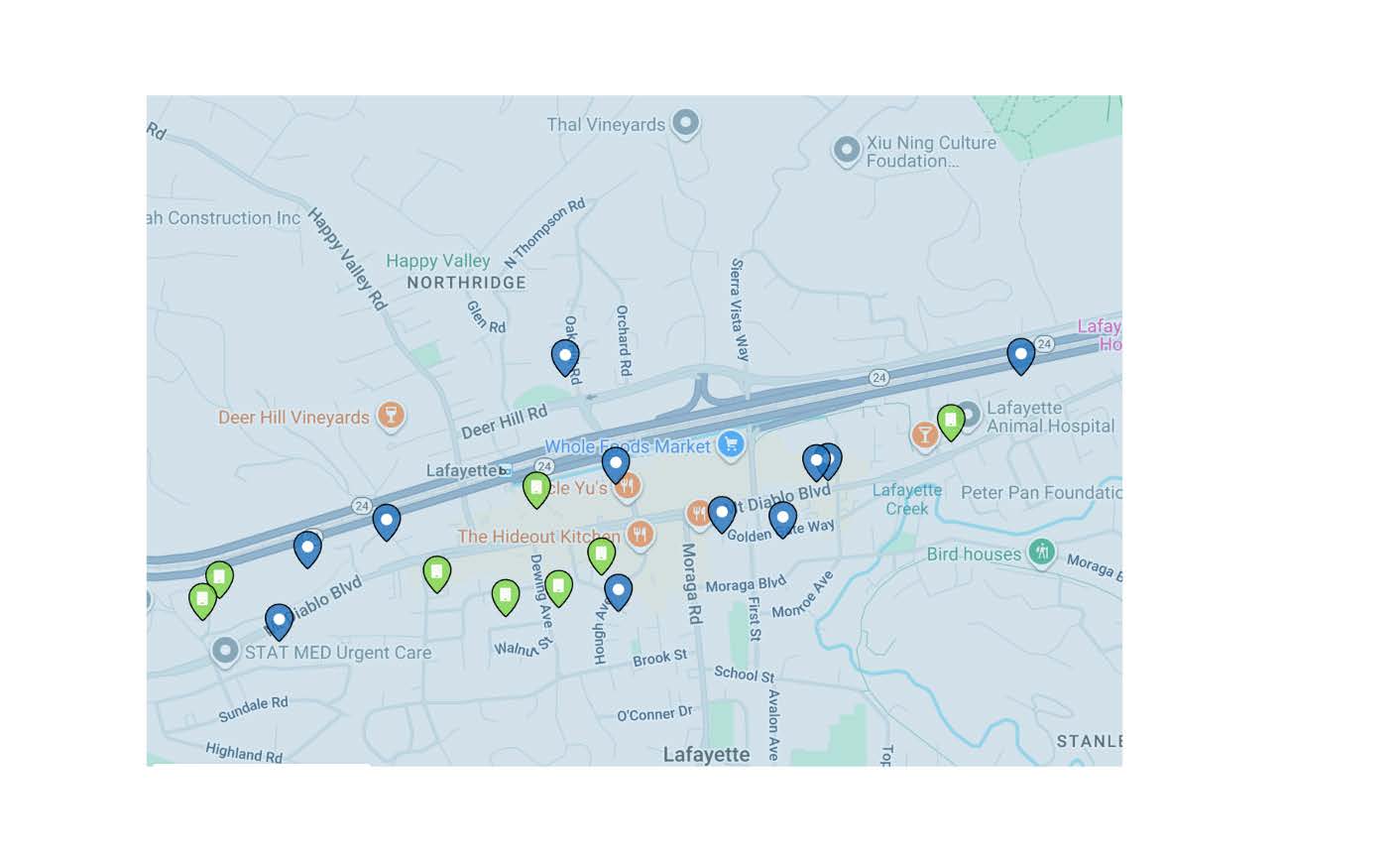Lafayette mayor discusses housing initiatives at annual LHC meeting

Lafayette Mayor Susan Candell joined the Lafayette Homeowners Council at its annual meeting on Oct. 7 to discuss housing development in the community. She began by thanking Lafayette voters for passing Measure H, the halfcent sales tax measure passed last year that has helped to provide valuable services for the community, then moved quickly onto housing.
Candell discussed the recent Housing Element and the Regional Housing Needs Assessment (RHNA). Lafayette's required housing unit count increased from 400 in the 5th cycle seven years ago to 2,114 in the current cycle, Candell said. As a result, the city had to come up with an upzoning plan to create enough land at the right densities to create the potential for 2,114 housing units. After years of work, the city finally received certification from the California Department of Housing and Community Development (HCD), however the Housing Action Coalition sued the city over its housing element.
"A couple of cities around the Bay Area were also targeted in this manner," Mayor Candell said during her presentation. "We had to rehire a housing consultant in order to figure out how to handle this. It isn't over. Other cities have had to put money into an affordable housing fund. I don't know where this is going to end up, but we are currently combatting that."
Mayor Candell then gave an overview of the possible implications of Senate Bill 79, which is currently pending the Governor's signature. The bill would have required upzoning near the Bay Area Rapid Transit (BART) station to 80 units per square acre within a quarter mile, and 60 units per square acre within a half mile. The city opposed this due to safety concerns, specifically regarding evacuation in high fire severity zones. Lafayette, among other cities, successfully advocated for a change and an amendment was made that exempted non-urban counties, including Contra Costa. "Senator Tim Grayson did the heavy lift for us," Candell said.
Additionally, Candell explained that the Metropolitan Transportation Commission (MTC), the Bay Area's transportation authority, adopted the Transit-oriented communities (TOC) policy in 2022, requiring that some cities increase housing development within half a mile of BART. Operation and Management (O&M) funding is tied to the city's compliance, and with the upzoning being a costly and timeconsuming process, MTC has received many complaints from cities across the Bay Area.
According to a staff report presented by City Manager Niroop Srivatsa at the Oct. 14 city council meeting, "The Federal Highway Administration (FHWA) provides MTC with federal transportation funding, which is distributed through the One Bay Area Grant (OBAG)p rogram. While TDC Policy compliance is technically voluntary, jurisdictions must demonstrate compliance to qualify for future OBAG funding."
"Just to summarize here," Candell said at the LHC meeting, "even though we have a certified housing element, [which] we went through years of the process that we're supposed to follow to make the land available to build on, we can still get sued, because we are [being sued]; Sacramento can write bills that completely upend our housing element, like SB 79 would have; and our regional government is now able to completely upend our housing element in order to get grant funding," Candell said.
"Lafayette is not anti-housing," Candell noted. "We're doing really, really well. We have a ton of projects, especially given the size of our city."
Candell was especially excited about the proposed Sunflower Hill and Satellite Affordable Housing Associates (SAHA) project, which would build 48 permanent supportive housing units in downtown Lafayette for individuals with intellectual and developmental disabilities (I/DD). The city had previously identified this city-owned site at 949 Moraga Road, currently a parking lot, as an opportunity site for housing under its Housing Element. Sunflower Hill's designs for the new community include one- and two-bedroom apartments, a community room, fitness room, teaching kitchen and small garden.
The application for the State's Multifamily Finance Super NOFA funding was incredibly competitive, with only two awards in Contra Costa County, according to the City of Lafayette.
The city has entered into an Exclusive Negotiating Rights Agreement and intends to contribute the land for the development, conditioned on the project acquiring full funding. The $19.5 million awarded from HCD, covers about a third of the project's funding.
The Accessory Dwelling Unit (ADU) production is outpacing Lafayette's multi-family production, Candell noted. Part of the housing element was to encourage more citizens to build ADUs, and the city council created an ADU incentive program offering reduced fees, accelerated processes, and preapproved plans.
The Connecting Lafayette Project, which will provide safe and direct walking and biking connections between downtown Lafayette and surrounding neighborhoods for students from Stanely Middle School and Lafayette Elementary School, aims to be built next summer, and the BART walkway project has been funded, after seven years from the start of the project. The city plans to turn it into a "grander entrance" to Lafayette's downtown. And more projects are in the pipeline.
To view the City of Lafayette's Major Development Projects Map, visit https://lafayette.icitywork.com/.
